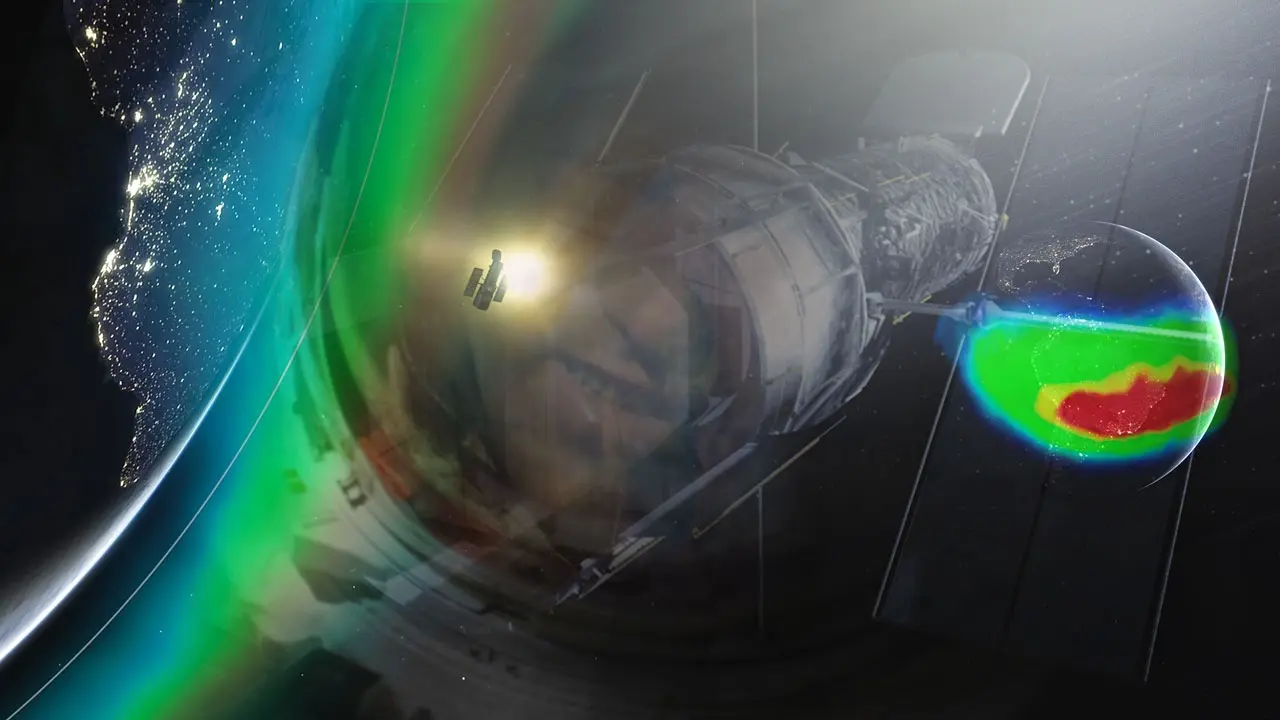Updated 1 April 2025 at 21:50 IST
The Bermuda Triangle of Space: The Mysterious Zone Where Satellites Fail and Astronauts Fear to Tread
Satellites passing through this area often experience malfunctions, with systems crashing, data corruption, and equipment failure.
- Science News
- 4 min read

New Delhi: Imagine a vast and mysterious region in space that’s causing satellites to malfunction, posing risks to space missions, and even threatening the safety of astronauts. Known as the South Atlantic Anomaly (SAA), this magnetic hotspot is one of Earth’s most puzzling phenomena.
Just like the Bermuda Triangle of the sea, the SAA is a region where strange, inexplicable occurrences are happening—and it might just hold the key to understanding the future of Earth’s magnetic field.
What Is the South Atlantic Anomaly?
The South Atlantic Anomaly is a large area in Earth's atmosphere where the planet's magnetic field is weaker than usual. This anomaly is located over the South Atlantic Ocean, stretching across parts of South America and Africa.

The weakening of Earth's magnetic field in this zone has led to increased radiation levels, making it hazardous for satellites, spacecraft, and even astronauts who venture too close.
Advertisement
Why is this so dangerous?
Satellites passing through this area often experience malfunctions, with systems crashing, data corruption, and equipment failure. Astronauts aboard the International Space Station (ISS) and other spacecraft also have to be cautious when traveling through the anomaly, as it can disrupt their mission equipment and pose potential health risks due to heightened radiation exposure.
A Mysterious Connection to Earth’s Core
The origins of the South Atlantic Anomaly are closely tied to what’s happening deep beneath the Earth’s surface. Scientists believe the anomaly is influenced by the dynamic and complex relationship between the Earth’s core and mantle.
Advertisement
The boundary between the outer core (a layer of liquid metal) and the mantle (solid rock) experiences drastic differences in temperature and movement. Beneath Africa, there is a lack of subduction zones—where tectonic plates collide or move under one another. As a result, there’s no cooling effect to stabilize the temperature at the core-mantle boundary, leaving this part of the mantle hotter than other areas of the Earth.

In contrast, in regions like South America, the Nazca plate carries material from the surface straight down to the core-mantle boundary, leading to cooler conditions. Scientists believe this temperature disparity plays a major role in the development of the anomaly and its gradual shift from Africa to South America.
Dr. Trindade, according to media reports, and his team of scientists have uncovered an intriguing pattern: The anomaly in the South Atlantic seems to follow a cyclical movement, originating in Africa and migrating across the Atlantic to South America. It’s a process that repeats itself approximately every 250 years.
“It’s a remarkable observation,” says Trindade. “Every time an anomaly is born in Africa, it takes about 250 years to reach South America. And after that, the anomaly in South America disappears, only for a new one to form back in Africa.”
What Are Magnetic Reversals?
Over millions of years, Earth’s magnetic poles have flipped several times, with the magnetic north and south poles switching places. When this happens, the magnetic field weakens significantly, exposing Earth to the harsh radiation of space.

Dr. Trindade theorizes that the movement of the anomaly could be a precursor to a larger event: a full magnetic pole reversal. He warns that if the magnetic field were to flip, the consequences would be severe. “If a reversal were to occur, we’d face a magnetic field much weaker than today’s, which would jeopardize satellites, communications, and space missions. The impact on global infrastructure could be catastrophic,” says Trindade.
How Likely Is a Magnetic Reversal?
Despite the growing concern, scientists agree that a magnetic field reversal is not something we need to worry about anytime soon. Though the magnetic field has weakened slightly, it still remains at levels far above the threshold required for a full reversal.
The process of magnetic field reversal doesn’t follow a regular timetable. Some periods in Earth’s history have seen rapid shifts in magnetic polarity, while other times, the magnetic field has remained stable for millions of years.
“On average, the magnetic field changes direction two to four times per million years,” explains Dr. Korte, a geomagnetism expert. “But there’s no certainty when the next reversal will happen. We could be looking at hundreds of thousands to millions of years before it occurs.”
“If we didn’t have the magnetosphere,” says Dr. Trindade, “our atmosphere would erode, and we would lose essential components like water and carbon dioxide. Eventually, the water cycle would cease to exist, and life as we know it would not be possible.”
Published By : Isha Bhandari
Published On: 1 April 2025 at 21:44 IST
